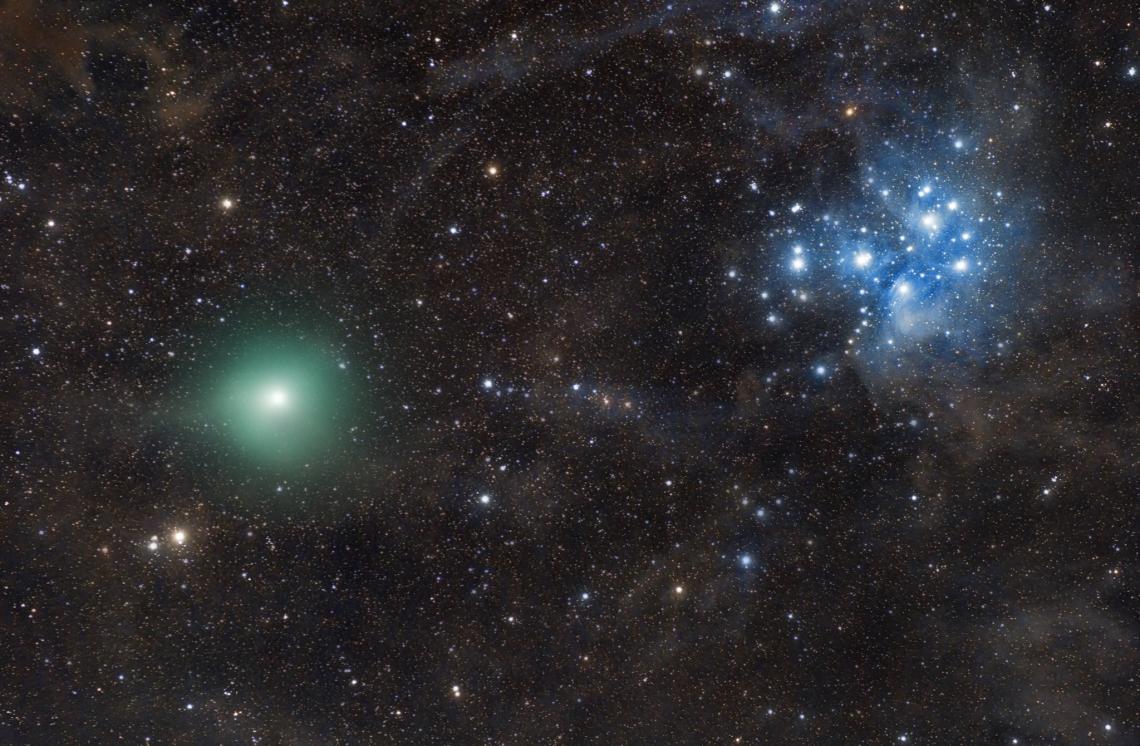The most powerful meteor shower in the earth’s sky, the Geminids, is active almost all of December, and its peak falls on the 13th or 14th. At this time, we can observe more than a hundred “falling stars” per hour. But this year, this shower may get an unexpected “helper”. We are talking about the dust trail left by the short-period comet Wirtanen (46P / Wirtanen).
This comet was discovered in January 1948 by American astronomer Carl Alvar Wirtanen at the Lick Observatory in California. At that time, it could approach the Sun at perihelion by about 1.61 AU (240 million km). On April 10, 1972, the “tailed star” flew quite close to Jupiter, which changed its orbit with its gravity; now its perihelion has “descended” to a distance of 1.26 AU (188 million km) from our luminary.

The next approach to Jupiter, on February 26, 1984, additionally reduced the perihelion to 1.08 AU. This meant that the minimum possible distance between the comet and our planet was only 0.08 AU (12 million km). It came to us at almost this distance on December 16, 2018, making the closest flyby of the Earth in its history. At this time, 46P/Wirtanen looked like a large bright spot, moving rather quickly with the constellations Taurus and Auriga. Its total brilliance reached the 3rd magnitude, so it was not difficult to notice it with the naked eye in a rather dark sky outside of large cities for several nights.
Then spectral observations revealed an increased alcohol content in the composition of cometary gases, which gave some journalists reason to call it the “alcoholic comet”. However, this alcohol was not ethyl but methyl, which is unsuitable for internal use and even poisonous.
According to scientists’ calculations, clouds of dust particles ejected by comet Wirtanen during its approaches to the Sun are experiencing even stronger gravitational effects from large planets. Entering the Earth’s atmosphere, such particles heat up strongly and evaporate, forming bright traces. We observe them as meteor showers. Since all meteors generated by the same comet move along close trajectories, due to the effect of perspective, it seems to us that they “fly out” from one point in the sky — the radiant.
Recently, a forecast was made according to which a meteor plume from the passage of the comet in 1974 should cross the Earth’s orbit, and this will happen on December 12 — about the same time when the Earth will be in the “right” place. However, astronomers do not expect especially high activity from the new shower — at best, it will reach several dozen meteors per hour. In addition, it will be very difficult to observe it in Ukraine: its radiant is located in the southern constellation Sculptor, which is visible in our latitudes but not in the best conditions, and besides, in December it hides behind the horizon shortly after the end of evening twilight. Preliminary calculations indicate that the peak of Sculptorids (this is how this shower should be called according to the rules of astronomical nomenclature) should be expected between 10 a.m. and 03 p.m. UTC time, that is, we have few chances to see it. So it seems that the observers in the Southern Hemisphere will get all the enjoyment.

If scientists are not mistaken and a new meteor shower really appears in the sky of the Earth, it will set two records at once: firstly, it will be the youngest of the existing showers, and secondly, its meteors will enter the Earth’s atmosphere at a speed of only 15 km/s, which is also the lowest indicator of all known “star showers”. Still, both of these records belonged to the Draconids associated with the short-period comet Giacobini-Zinner (21P/Giacobini-Zinner).
By the way, Comet Wirtanen was considered as the main target of the European Rosetta mission, eventually directed to comet Churyumov-Gerasimenko (67P/Churyumov-Gerasimenko).
Follow us on Twitter to get the most interesting space news in time
https://twitter.com/ust_magazine


